Search
Search Results
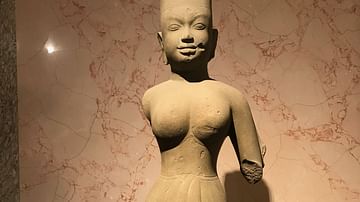
Image
Ancient Statue of Goddess Uma
This ancient statue of the Hindu goddess Uma (Parvarti) is rendered in the pre-Angkor style of Prasat Andet. It comes from Cambodia, it is made from standstone, and it dates to the late 7th or early 8th century CE. (Museum Rietberg, Zürich...
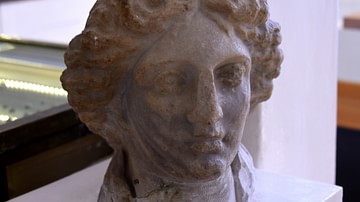
Image
Head of Goddess Artemis
Marble head of Artemis, the Greek goddess of the hunt, forests and hills, and archery, from Pella, the Jordan Valley, modern-day Jordan Hashemite Kingdom, 1st century CE.
Jordan Archaeological Museum, Amman.
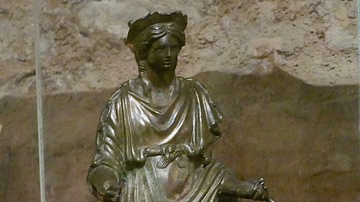
Image
Goddess Sequana Figurine
A bronze figurine of the Celtic deity Sequana, a healing goddess, regarded perhaps as the personification of the River Seine. From her sanctuary at the source of the river near Dijon. (Archaeological Museum of Dijon, France)
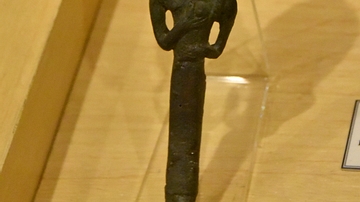
Image
Goddess from Syria
Bronze figurine of a goddess. Middle Bronze Age, 1650-1050 BCE. From modern-day Syria. (Museum of Archaeology, Istanbul, Turkey).
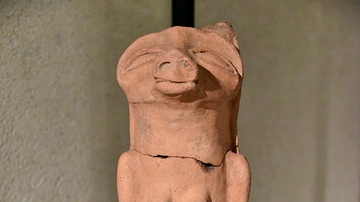
Image
Statuette of a Hybrid Goddess
Fired clay statuette of an unidentified hybrid goddess. There are two triangular defects at the sides, reminiscent of prehistoric incense burners. Probably from Abydos, Egypt. First to second Dynasty, 3100-2700 BCE. (The Neues Museum, Berlin...
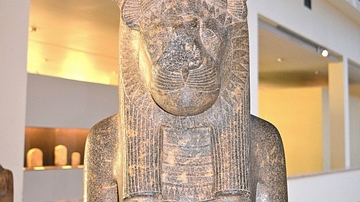
Image
Statue of the goddess Sekhmet
This statue of the ancient Egyptian goddess Sekhmet is made from granite. It dates from c. 1300 BCE, which coincides with the New Kingdom Period (c. 1550 BCE–c. 1077 BCE). (Musée du Cinquantenaire, Brussels)
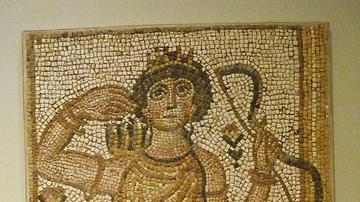
Image
Floor Mosaic with the Goddess Artemis
This floor mosaic with the goddess Artemis is made of limestone tesserae and was made in the Eastern Mediterranean, c. 400-500 CE. (Royal Ontario Museum, Toronto)
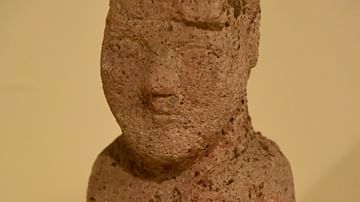
Image
Bust of Goddess Cybele from Gordium
This is a limestone bust of the goddess Cybele. 6th century BCE. From Gordium (or Gordion), the capital city of ancient Phrygia. (Museum of Archaeology, Istanbul, Turkey).

Image
God and Goddess from Mesopotamia
The upper halves of terracotta plaques, depicting a male figure (on the left, who has a long beard) and a female figure (on the right, with bare breast) wearing a horned headdress (symbol of divinity) and appearing to hold a long bar in both...

Definition
Minerva
Minerva was the Roman goddess of wisdom, medicine, commerce, handicrafts, poetry, the arts in general, and later, war. In many ways similar to the Greek goddess Athena, she had important temples in Rome and was patron of the Quinquatras festival...